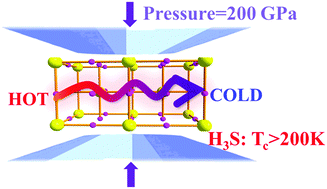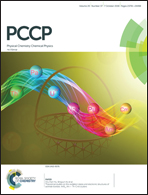Strong electron–phonon interaction retarding phonon transport in superconducting hydrogen sulfide at high pressures†
Abstract
Realistic representation of quantum interactions between electrons and phonons is crucial to uncovering the fundamental origin of superconductivity and predicting superconductors with a high transition temperature (Tc). We study the influence of the intrinsic electron–phonon interaction (EPI) on the phonon transport of superconducting hydrogen sulfide at high pressures, and its variation under an external magnetic field using all-electron first-principles calculations. High pressure greatly shortens interatomic distances, modifies the Fermi surface with sharp variation around sulfide atoms and leads to a strong EPI. Such a strong EPI substantially broadens the linewidths of major heat-carrying phonons and induces discontinuity, the so-called Kohn anomalies, in the phonon dispersions. In the superconducting state, the strong EPI competes with the weakened phonon–phonon interactions and induces a local peak in lattice thermal conductivity well below Tc. Under an external magnetic field, the reduced electron density around the Fermi surface leads to a slightly decreased EPI and Tc, which is consistent with previous experimental observation. The results gained from this work help us to understand the quantum behaviors of electrons and phonons and the influence of their interaction on the phonon transport of high-Tc superconductors.



 Please wait while we load your content...
Please wait while we load your content...